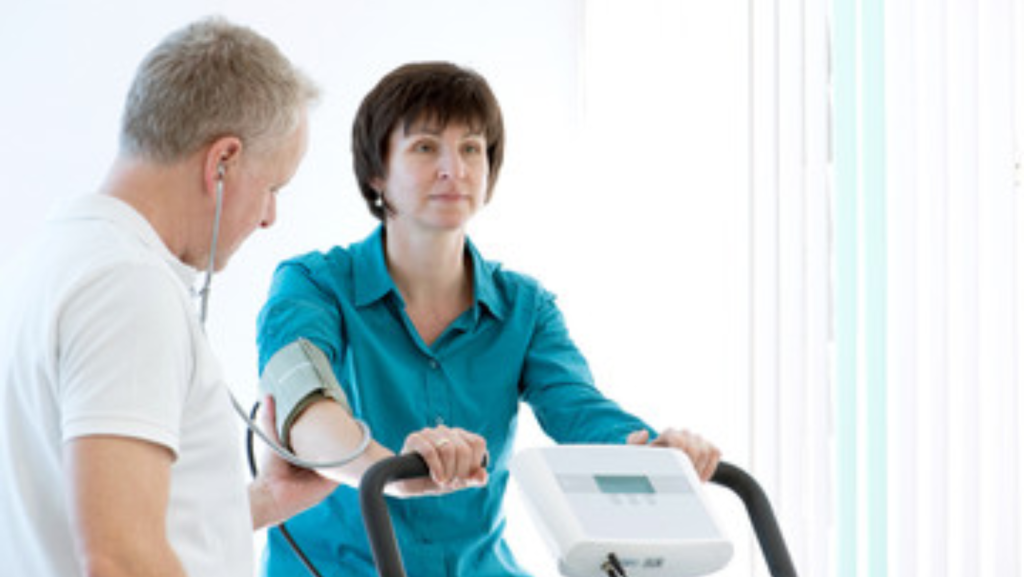Do you know the difference between a stress test and a nuclear stress test? If not, you’re in the right place. In this article, we’ll explain the purpose, methodology, and types of both tests. We’ll also discuss the differences in imaging techniques, radiation exposure, safety concerns, and the cost and availability of these tests. By the end, you’ll have a clear understanding of how these two tests differ and which one may be right for you.
Purpose of the Tests
The purpose of these tests is to evaluate the function and blood flow of your heart. Both stress tests and nuclear stress tests serve this purpose, but they differ in the methods used. Stress tests involve exercising on a treadmill or stationary bike to increase your heart rate, allowing doctors to assess how well your heart functions under stress. On the other hand, nuclear stress tests involve the injection of a small amount of radioactive dye into your bloodstream, which enables the visualization of blood flow to your heart muscle using a special camera.
Before undergoing these tests, it is important to understand the benefits and risks involved. The benefits include the ability to identify heart problems, such as coronary artery disease or irregular heart rhythms, and to guide appropriate treatment plans. However, there are also risks associated with these tests. The exercise involved in stress tests may cause shortness of breath, chest pain, or even a heart attack in rare cases. In nuclear stress tests, the small amount of radiation exposure is generally considered safe, but there is still a slight risk of allergic reactions to the dye or complications from the injection.
To prepare for these tests, you may be instructed to avoid eating or drinking for a few hours beforehand, refrain from certain medications, and wear comfortable clothing and shoes suitable for exercise. It is crucial to follow these instructions to ensure accurate test results and minimize any potential risks.
Methodology and Procedure
To perform the stress test or nuclear stress test, the doctor will begin by attaching electrodes to your chest and placing a blood pressure cuff on your arm. This allows the monitoring of your heart’s electrical signals and blood pressure during the test. The methodology and procedure for both types of tests are similar, with a few differences in the use of a radioactive tracer for the nuclear stress test.
Here is the procedure for a stress test:
- You will walk on a treadmill or pedal a stationary bike while the intensity of the exercise gradually increases.
- The doctor will monitor your heart rate, blood pressure, and symptoms throughout the test.
- The test will continue until you reach your target heart rate, experience symptoms, or your doctor decides to stop the test.
- After the test, you will be monitored for a short period to observe any changes in your heart’s activity.
Here is the procedure for a nuclear stress test:
- A small amount of a radioactive tracer will be injected into your bloodstream.
- You will then rest for a short period to allow the tracer to distribute throughout your body.
- Images of your heart will be taken using a special camera that detects the radiation from the tracer.
- You may be asked to exercise on a treadmill or receive a medication to simulate exercise while the images are being taken.
Both stress tests and nuclear stress tests are effective in evaluating the health of your heart. However, it is important to follow your doctor’s instructions for patient preparation, such as avoiding caffeine and certain medications before the test, to ensure accurate results.
Types of Stress Tests
For different types of stress tests, there are two main categories to consider: exercise stress tests and pharmacological stress tests.
Exercise stress tests involve physical activity to induce stress on the heart. During this test, you will be asked to walk on a treadmill or ride a stationary bike while your heart rate and blood pressure are monitored. The intensity of the exercise will gradually increase, allowing the doctor to assess how well your heart functions under stress. This type of stress test is commonly used to diagnose coronary artery disease and evaluate exercise tolerance.
On the other hand, pharmacological stress tests use medications to simulate the effects of exercise on the heart. These medications, such as dobutamine or adenosine, are administered intravenously to increase your heart rate and blood flow. Pharmacological stress tests are often performed when a patient is unable to exercise due to certain conditions or limitations. They can help evaluate the blood flow to the heart and detect any abnormalities or blockages in the coronary arteries.
Both exercise stress tests and pharmacological stress tests provide valuable information about the functioning of the heart and can aid in the diagnosis and management of heart conditions. Your doctor will determine which type of stress test is most suitable for your specific circumstances.
Types of Nuclear Stress Tests
When it comes to types of nuclear stress tests, there are two main options to consider:
- Myocardial Perfusion Imaging (MPI): This type of nuclear stress test involves the injection of a small amount of radioactive tracer into your bloodstream. The tracer travels to your heart and is detected by a special camera that takes pictures of your heart at rest and during exercise or medication-induced stress. These images allow doctors to assess blood flow to the heart muscle and identify any areas that may not be receiving enough blood.
- Stress Echocardiography: In this type of nuclear stress test, a small amount of radioactive tracer is injected into your bloodstream, similar to MPI. However, instead of using a camera to take pictures, stress echocardiography uses ultrasound technology to create images of your heart. The ultrasound allows doctors to assess the movement of your heart’s walls and evaluate blood flow to the heart muscle.
Both types of nuclear stress tests provide valuable information about the functioning of your heart and can help diagnose conditions such as coronary artery disease. Your doctor will determine which test is most appropriate for your specific situation.
Differences in Imaging Techniques
You can distinguish between a stress test and a nuclear stress test based on the differences in their imaging techniques. Stress tests typically use imaging techniques such as electrocardiography (EKG) or echocardiography to assess the heart’s function. These tests provide valuable information about the heart’s electrical activity and blood flow during exercise. On the other hand, nuclear stress tests utilize a radioactive tracer to provide detailed images of the heart’s blood flow and function. This tracer is injected into the bloodstream and is detected by a special camera that captures images of the heart at rest and during exercise. The images produced by nuclear stress tests offer a higher level of detail and can detect abnormalities that may not be visible on a regular stress test. This increased diagnostic accuracy makes nuclear stress tests particularly useful for evaluating patients with suspected coronary artery disease or assessing the effectiveness of treatments. It is important to note that while nuclear stress tests provide more detailed imaging, they also involve a higher level of radiation exposure compared to regular stress tests.
Radiation Exposure and Safety Concerns
To ensure your safety and minimize radiation exposure, it is important to consider the potential risks associated with nuclear stress tests. While nuclear stress tests are generally safe, they do involve a small amount of radiation exposure. Here are some key points to keep in mind regarding radiation risk and health effects:
- Radiation Risk:
- Nuclear stress tests use a radioactive substance called a tracer, which emits radiation.
- The amount of radiation used in a nuclear stress test is considered low, and the benefits of the test usually outweigh the potential risks.
- The level of radiation exposure from a nuclear stress test is comparable to that of other diagnostic imaging tests, such as a CT scan or X-ray.
- Health Effects:
- The radiation exposure from a nuclear stress test is generally well-tolerated by most people.
- The potential health effects of radiation exposure are rare, but they can include a slight increase in the risk of developing cancer over a long period of time.
- The risk of radiation-induced cancer from a nuclear stress test is considered to be very low, especially when compared to the potential benefits of diagnosing and treating heart conditions.
Cost and Availability of the Tests
The cost and availability of these tests may vary depending on factors such as location and healthcare coverage. Here is a table that compares the cost and availability of a stress test and a nuclear stress test in different scenarios:
| Scenario | Cost of Stress Test | Cost of Nuclear Stress Test | Availability of Stress Test | Availability of Nuclear Stress Test |
|---|---|---|---|---|
| Scenario 1 | $500 | $1000 | Limited | Widely available |
| Scenario 2 | $200 | $800 | Limited | Limited |
| Scenario 3 | $1000 | $1500 | Widely available | Widely available |
| Scenario 4 | $300 | $1200 | Limited | Limited |
| Scenario 5 | $800 | $2000 | Widely available | Limited |
In general, a stress test is more affordable than a nuclear stress test. However, the availability of these tests can vary. Stress tests are commonly available, but nuclear stress tests may have limited availability depending on the healthcare facility and location. It’s important to consult with your healthcare provider or insurance company to determine the cost and availability of these tests in your specific situation.





